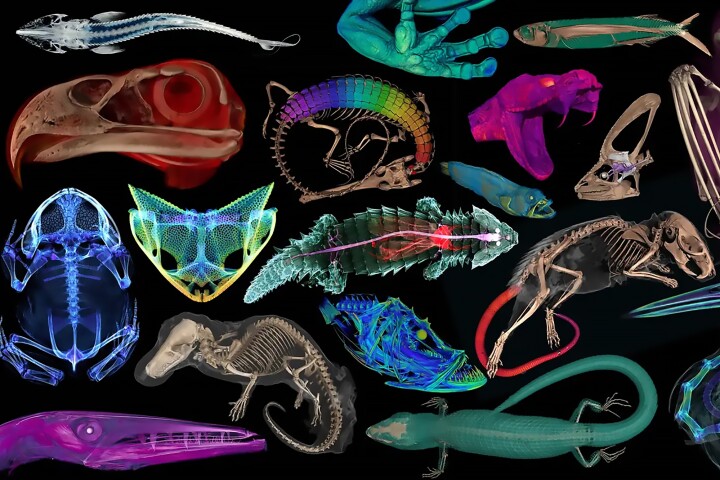CT scan
-
The openVertebrate project is a significant milestone for natural history museums, researchers, educators, students, and the public, creating the first digital library to offer free access to stunning 3D images of over 13,000 vertebrates.
-
Dome-skulled dinosaurs may have looked less like Friar Tuck and more like the Fresh Prince of Bel Air. New fossil finds suggest they may have had big bristly ornaments on their heads, and might not have butted heads like they do in the movies.
-
A mummified body discovered over a century ago has been digitally unwrapped using CT technology, revealing the body of a teenage boy decorated with nearly 50 amulets highlighting a variety of different ancient Egyptian burial rituals.
-
A clinical trial has shown a new type of medical scan can identify specific adrenal gland nodules responsible for high blood pressure. The scan offers the first simple diagnostic tool for what is the cause of hypertension in up to 10% of people.
-
A new AI tool can accurately measure plaque deposits in arteries and predict a patient’s risk of suffering a heart attack within five years. The tool promises to achieve in seconds what has previously taken trained experts up to 30 minutes to deliver.
-
While archeologists can learn a lot from studying ancient Egyptian mummified bodies, unwrapping those bodies may damage their valuable coverings. With that problem in mind, scientists have now "digitally unwrapped" a mummy via CT scanning technology.
-
A very small pilot study has found several treatments of low-dose radiation, delivered from a CT scanner, could increase alertness and responsiveness in people suffering severe late-stage Alzheimer’s disease. However, the research is still preliminary.
-
Ordinarily, if biologists wish to confirm that an animal specimen represents a new species, they have to perform a dissection – essentially destroying it. Now, though, the task has been accomplished non-invasively, using MRI and CT scan technologies.
-
A new X-ray scanner adds color and a third dimension, creating high resolution, cutaway 3D models that can diagnose bone fractures and monitor healing. A feasibility study of the machine has now been conducted, with a larger trial set to begin soon.
-
Two new imaging breakthroughs demonstrate a PET/MRI approach to locate specific locations of chronic pain in a patient, and a full-body scanner that can visualize the complete systemic burden of inflammatory arthritis for the very first time.
-
Pesticide contamination may be triggering abnormal brain development in baby bumblebees, according to the results of a newly published scientific paper during which researchers scanned the brains of 92 worker bees using micro-CT technology.
-
Scientists have recreated the “voice” of a 3,000 year-old mummy by scanning the shape of his vocal tract, 3D printing a replica of it, then hooking it up to an electronic larynx. The resulting sound is a single vowel that's quite eerie.
Load More











